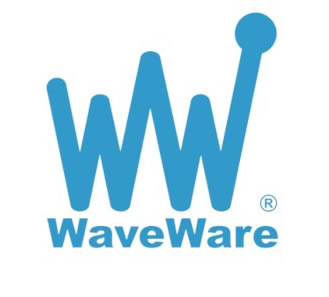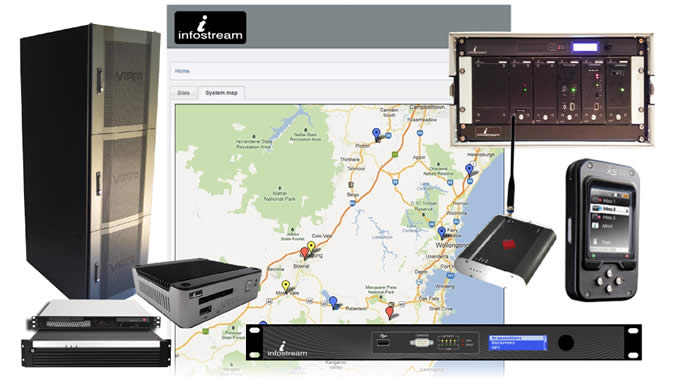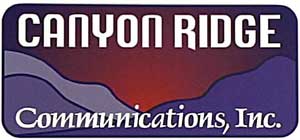Selected portions of the BloostonLaw Telecom Update, and/or the BloostonLaw Private Users Update — newsletters from the Law Offices of Blooston, Mordkofsky, Dickens, Duffy & Prendergast, LLP are reproduced in this section with the firm’s permission.
| BloostonLaw Telecom Update | Vol. 18, No. 5 | February 4, 2015 |
March 16: Deadline to Notify AT&T of Service Provided in Modified CAF Phase I Census BlocksOn January 16, AT&T modified its Connect America Phase I, Round 2 incremental broadband deployment plans to include an additional 7,931 census blocks. Since these census blocks are not eligible for CAF funding if they are already served, the FCC has established a deadline of March 16, 2015 for carriers that may be serving the newly-identified blocks to notify AT&T of the existing service. Existing providers must offer broadband at speeds of 3 Mbps or higher in order for the census block to be deemed served. A list of the 7,931 census blocks that AT&T now intends to serve can be found here. Carriers offering service in these blocks should feel free to contact the firm for more information. Headlines
FCC Releases Fact Sheet for Upcoming Net Neutrality OrderOn February 4, the FCC issued a fact sheet outlining Chairman Wheeler’s proposal “to preserve and protect the open Internet as a place for innovation and free expression,” on which the full Commission will vote at the February 26 Open Meeting. As many news sources have recently teased, the draft Order reclassifies broadband Internet access service, i.e., “the retail broadband service Americans buy from cable, phone, and wireless providers,” as a telecommunications service under Title II. The type of broadband service made available to edge providers also may be covered if a court finds it necessary. The Chairman also intends to rely on Section 706 in addition to Title II because that section does not have the ‘common carriage’ limitation of Title II that ultimately led to the D.C. Circuit vacating the previous Net Neutrality order. Provisions on mobile broadband will also rely on Title III of the Communications Act. The FCC states, however, that some data services do not go over the public Internet and, therefore, are not "broadband Internet access" services subject to Title II oversight, such as VoIP from a cable system. The provisions of Title II that will be applied to broadband include: - Prohibition of “unjust and unreasonable practices” (Sections 201 and 202);
- Investigation of consumer complaints under section 208 and related enforcement provisions (Sections 206, 207, 209, 216 and 217);
- Protection for consumer privacy (Section 222);
- Fair access to poles and conduits (Section 224);
- Protection for people with disabilities (Sections 225 and 255); and
- Universal service fund support for broadband service in the future (partial application of Section 254).
Provisions of Title II that will not apply and will be subject to forbearance include rate regulation (tariffs or other form of rate approval and unbundling) and Universal Service Contributions (i.e., the Order does not require broadband providers to contribute to the Universal Service Fund). The Order also will not impose any “burdensome” administrative filing or accounting standards. Regarding Net Neutrality itself, the draft Order bans blocking, throttling, and paid prioritization practices (including “fast lanes” and prioritization of content and services of affiliates). It also enhances the existing transparency requirements. The Order does permit “reasonable network management” that is primarily used for and tailored to achieving a non-commercial, “legitimate network management” purpose. For example, according to the fact sheet a provider could not cite reasonable network management to justify reneging on a promise to provide “unlimited” data. AWS-3 Auction Closes With Record $41.3 Billion in Net Revenues to US TreasuryAfter 45 bidding days and 341 rounds completed, bidding in the FCC’s AWS-3 auction (Auction 97) ended last Thursday with a total of $44.899 billion in gross winning bids. Taking into account bid credits, the auction generated net proceeds to the US Treasury of $41.329 billion. Big winners were as follows: - AT&T (bidding under the name AT&T Wireless Services 3 LLC) paid approximately $18.2 billion for 251 winning bids.
- Verizon (bidding under the name Cellco Partnership d/b/a Verizon Wireless) paid approximately $10.4 billion for 181 winning bids.
- DISH (participating through Alaska Native companies Northstar Wireless, LLC and SNR Wireless LicenseCo, LLC) paid just under $10 billion (after receiving $3.3 billion in small business bid credits) for 702 winning bids.
- T-Mobile (bidding under the name T-Mobile License LLC) = $1,774,023,000
A Public Notice issued last Friday (DA 15-131) established February 13, 2015 as the deadline for post auction down payments (20% of net bids) and filing of long-form applications. Final license payments (balance of net bids) will be due March 2, 2015. There is a ten-day Petition to Deny period that will begin after long-form applications appear on Public Notice. “Today we closed bidding Auction 97 — by far the highest-earning spectrum auction the United States has ever seen. But it was much more than that," said FCC Chairman Tom Wheeler last Thursday. "This auction also marked a new era in spectrum policy, where a collaborative and unprecedented effort resulted in new commercial access to federal spectrum bands.” In all, 65 MHz of AWS-band spectrum was auctioned, including 50 MHz of paired channel spectrum and 15 MHz of unpaired spectrum for supplemental uplink operations. Out of a total of 70 eligible bidding entities, a little under half (just 31) came away from the auction with winning bids. Other notable bidders included US Cellular (bidding as small business Advantage Spectrum, LLC), which bid $338.3 million for 124 licenses, and America Movil-backed Puerto Rico Telephone Company, which had $170.9 million in winning bids. Responding to the more than $3 billion in small business credits garnered by DISH (which has annual revenues of nearly $14 billion), FCC Commissioner Ajit Pai on Monday issued a strongly-worded statement slamming the FCC for allowing companies like DISH to abuse the Designated Entity (DE) program, and urging the FCC Chairman to immediately launch an investigation. “The Commission must reform its rules to stop abuse of the DE program,” said Commissioner Pai. “Unfortunately, the agency is currently headed in the opposite direction, having issued proposals last October that would jettison even more of the DE program’s safeguards and make it even easier for giant corporations to engage in these types of shenanigans. We must change course, and soon, by closing loopholes that allow big businesses to rip off the American people to the tune of billions of dollars.’ The Commission is making available information previously withheld under the limited information procedures for Auction 97. Results files that include the identities of bidders and the net amounts of bids are now available on the web page for Auction 97 (http://wireless.fcc.gov/auctions/97/) and in the FCC Auction System (http://auctions.fcc.gov/). Applications to participate in the auction (FCC Forms 175) now display the licenses that were selected by each applicant as well as any application exhibits that may have been suppressed during the auction. Applications are viewable in the FCC Auction System via the Auction Application Search. (https://auctionfiling.fcc.gov/form175/search175/index.htm). FCC Adopts New Indoor Location Accuracy Requirements for Wireless E911The FCC last week adopted amendments to its Enhanced 911 (E911) rules, incorporating indoor location accuracy standards because location accuracy technologies optimized for outdoor calling often do not work effectively or at all when calls are made indoors. According to the FCC, the new rules establish clear and measurable timelines for wireless providers to meet indoor location accuracy benchmarks, both for horizontal and vertical location information. The Commission said that its requirements and timeframes give similar weight to proposals agreed to last November by the four nationwide CMRS providers in conjunction with APCO and NENA, as well as a separate submission by the Competitive Carriers’ Association (CCA). The Commission noted that no single technological approach will solve the challenge of indoor location, and no solution can be implemented overnight. The new requirements therefore enable wireless providers to choose the most effective solutions and allow sufficient time for development of applicable standards, establishment of testing mechanisms, and deployment of new location technology. A complete text of the Fourth Report and Order (FCC 15-9) was released today and we are reviewing the fine print for any surprises. FCC Seeks Comments on Letter of Credit RequirementsOn January 30, the FCC’s Wireline Competition Bureau issued a Public Notice seeking comment on the Alliance of Rural Broadband Applicants’ Petition for Waiver of certain letter of credit requirements for provisionally selected rural broadband experiment applicants. Importantly, the Bureau is also seeking comment on how the issues raised in the Petition for Wavier may be relevant to the upcoming CAF Phase II competitive bidding process. In other words, comment is also invited on the letter of credit requirement generally as it may apply to CAF Phase II. Comments and reply comments on the Petition for Wavier are due on February 6 and February 14, respectively, while a deadline for general comments has not yet been established. Separately, the FCC denied the Alliance’s request to extend the February 3 deadline for Rural Broadband Experiment provisionally winning bidders to submit a letter from an acceptable bank committing to issue a LOC in the amount of the first year of distributed support. FCC Issues List of Next-In-Line Entities for Rural Broadband Experiment FundsOn February 3, the FCC issued a list of entities that are eligible to receive the Rural Broadband Experiment funding that became available due to the defaults of certain initially selected provisionally winning bidders. The list, which includes a number of rural providers, is available here. Once the FCC determines exactly how much additional funding is available due to defaulting provisionally winning bidders, new provisionally winning bidders will be selected from the list. Back in December, the FCC instituted a process by which applicants for Rural Broadband Experiment support that were not selected as provisionally winning bidders could maintain their eligibility for funding in the event a provisionally winning bidder defaulted by submitting three consecutive years’ worth of audited financial reports to the Commission. This list is comprised of entities that the FCC indicates have successfully met that requirement. The announcement comes on the heels of the denial of a number of petitions for waiver of the FCC’s audited financial report requirement for Rural Broadband Experiment funding, resulting in default by 15 provisionally winning bidders. Therefore, the potential for “next-in-line” funding is good. Law & Regulation
Wireless Bureau Extends Filing Deadlines for Review of Part 1 Competitive Bidding RulesActing on its own motion, the FCC’s Wireless Bureau last Friday extended the deadlines for comments and replies in response to the Part 1 NPRM (FCC 14-146) by two weeks. Comments are now due by February 20, 2015, and reply comments are due by March 6, 2015. The Part 1 NPRM seeks to revise certain of the Part 1 competitive bidding rules and Designated Entity (DE) provisions to provide small businesses greater opportunity to participate in the Broadcast Television Spectrum Incentive Auction (BIA) and thereafter in the provision of 600 MHz band services. FCC Issues Enforcement Advisory on Interference with Wi-Fi Hot SpotsOn January 27, the FCC’s Enforcement Bureau issued an Enforcement Advisory stating that no hotel, convention center, or other commercial establishment, or the network operator providing services at such establishments, may intentionally block or disrupt personal Wi-Fi hot spots on such premises, including as part of an effort to force consumers to purchase access to the property owner’s Wi-Fi network. According to the Bureau, such action is illegal and violations could lead to the assessment of substantial monetary penalties. The Advisory is a direct result of an investigation by the Bureau of Marriott International, Inc., which had deployed a Wi-Fi de-authentication protocol to deliberately block customers seeking to connect to the Internet through their own personal Wi-Fi hotspots while on Marriott property. Marriott settled the investigation by paying a civil penalty of $600,000. Following the investigation, the Bureau reportedly received a number of additional complaints suggesting that other commercial Wi-Fi network operators may be doing the same. The Bureau indicated it is investigating these complaints and will take appropriate action against violators. Sen. Sanders Introduces Bill to Fund Further BIP and BTOP GrantsOn January 27, Senator Bernie Sanders (I-Vt.) announced the introduction of new legislation, co-sponsored by Senator Barbara Mikulski (D-Md.), ranking member of the appropriations committee, which, among other things, appropriates $5 billion for broadband deployment initiatives for fiscal years 2015 through 2019. If the bill is passed, the appropriated funds will be made available through the existing Broadband Initiatives Program (BIP) and Broadband Technology Opportunities Program (BTOP) in equal measure ($2.5 billion per program per year). The bill would also invest $735 billion to repair roads, bridges and transit systems; $15 billion a year to improve intercity passenger and freight rail, including high-speed rail; $2.5 billion a year to implement improvement projects at airports across the country; $3.5 billion a year to accelerate deployment of NextGen satellite technology to improve air travel safety and increase airport capacity; $145 billion in water infrastructure over five years; $3 billion a year to improve inland waterways and coastal harbors; and $3 billion a year to improve our National Parks, Monuments, Heritage Areas and Landmarks. USAC Files Second Quarter 2015 Universal Service Support Mechanisms Fund Size ProjectionsOn January 30, USAC filed its Second Quarter 2015 Federal Universal Service Support Mechanisms Fund Size Projections with the FCC. According to the filing, the Second Quarter funding requirements are projected as follows: $185.34 million for HCL Support (+0.9% from last quarter); $223.30 million for ICLS (-0.45%); $260.11 million for frozen Price Cap Carrier Support (+1%); $148.95 million for frozen CETC Support (-1.1%); $102.80 million for CAF/ICC Support (-0.26%); and $204.50 million for the CAF reserve account (-0.38%); resulting in total High Cost Support Mechanism projected demand of $1.125 billion. Industry
Cablevision to Offer Wi-Fi Only Phone ServiceCablevision has announced that it will be rolling out a Wi-Fi alternative to traditional cell phones and data plans. Dubbed “Freewheel,” the service will rely on the Motorola moto g smart phone and be powered by “millions of Wi-Fi hotspots that extend from . . . home to the coffee shop to your office to your school.” While the Freewheel service will not be able to connect to mobile carriers’ systems in areas where Wi-Fi is not available, the cost will likewise be relatively inexpensive at $9.95 per month for current Cablevision subscribers and $29.95 per month for new subscribers. Freewheel claims that subscribers will have unlimited talk, data and text. News reports indicate that the Freewheel service is a turn on mobile carriers in general and Verizon in particular since Verizon has gone after cable business with its FiOS service. Here, Cablevision, which competes with Verizon in its home market, will be trying to steal away customers from Verizon by offering mobile phone service in addition to its cable, phone and Internet services. It remains to be seen if this business model will work — especially where the mobile device is only able to work if it has access to a Wi-Fi network. With access to Mi-Fi hot spots and the coming of 4G access in automobiles, the Freewheel service could portend a change in future mobile telephony and data communications if Freewheel is able to overcome any data usage limitations in these mobile environments. Calendar At A Glance
February
Feb. 4 – Oppositions are due on AT&T/Verizon Applications for Review of T-Mobile Data Roaming Petition.
Feb. 5 – Comments are due on Technology Transitions NPRM.
Feb. 5 – Comments are due on Windstream Petition for Declaratory Ruling on DS1/DS3 Access.
Feb. 6 – Comments are due on Unlicensed Use of TV Band and 600 MHz Band Spectrum.
Feb. 6 – Comments are due on Alliance of Rural Broadband Applicants’ Petition for Waiver.
Feb. 9 – Reply comments are due on CFC Bank Eligibility Waiver Request.
Feb. 9 – Comments are due on the IntraMTA Petition for Declaratory Ruling.
Feb. 14 – Reply comments are due on Alliance of Rural Broadband Applicants’ Petition for Waiver.
Feb. 17 – Filing deadline for Community Connect grant applications.
Feb. 20 – Comments are due on Part 1 Competitive Bidding NPRM.
Feb. 25 – Reply comments are due on Unlicensed Use of TV Band and 600 MHz Band Spectrum.
Feb. 27 – Deadline for Special Access Data Collection for small businesses with less than 1,500 employees.
Feb. 27 – Reply comments are due on the FCC’s Incentive Auction Procedures. March
Mar. 2 – Copyright Statement of Account Form for cable companies is due.
Mar. 2 – Annual CPNI Certification is due.
Mar. 2 – FCC Form 477 (Local Competition & Broadband Reporting) is due.
Mar. 6 – Reply comments are due on Part 1 Competitive Bidding NPRM.
Mar. 9 – Reply comments are due on Technology Transitions NPRM.
Mar. 9 – Reply comments are due on Windstream Petition for Declaratory Ruling on DS1/DS3 Access.
Mar. 9 – Comments are due on 911 Outage NPRM.
Mar. 11 – Reply comments are due on the IntraMTA Petition for Declaratory Ruling.
Mar. 16 – Deadline to notify AT&T of Service Provided in CAF Phase I Deployment Census Blocks.
Mar. 31 – FCC Form 525 (Delayed Phasedown CETC Line Counts) is due.
Mar. 31 – FCC Form 508 (ICLS Projected Annual Common Line Requirement) is due.
Mar. 31 – International Circuit Capacity Report is due. April
Apr. 1 – FCC Form 499-A (Annual Telecommunications Reporting Worksheet) is due.
Apr. 1 – Annual Accessibility Certification is due.
Apr. 7 – Reply comments are due on 911 Outage NPRM. | 











































 David George and Bill Noyes
David George and Bill Noyes



































